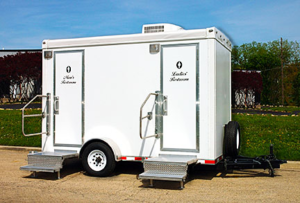Concrete Resurfacing Huntsville TX is a quick, affordable and highly customizable way to repair existing concrete. Resurfacing can also add decorative finishes to concrete surfaces, making them more aesthetically pleasing and functional.

The process starts with a thorough cleaning of the concrete surface. A bonding agent is then applied to the surface. Resurfacing products have high early strength that allows them to be open to traffic in as little as seven days.
Concrete surfaces can deteriorate and become damaged from a variety of causes. Freeze-thaw cycles, vehicle traffic, and everyday wear-and-tear can all contribute to the cracking or chipping of driveways, patios, sidewalks, and other concrete areas. However, replacing the concrete is often costly and labor-intensive. Instead, contractors can save time and money by resurfacing the existing surface. Concrete resurfacing involves applying a new layer of material over the existing concrete, which can be done quickly and easily. The cost of resurfacing will vary depending on the size and condition of the concrete area, but the overall cost is significantly less than the cost of a full replacement.
While resurfacing is not suitable for all concrete surfaces, it can be an effective solution for minor cosmetic issues. It is particularly useful for surfaces that have minor structural problems, such as surface damage and minor heaving or settlement. However, it is important to note that resurfacing will not fix more severe damage and may only serve as a temporary remedy. If the damage is extensive, it is best to consider a more permanent repair method such as a replacement.
When used for exterior applications, resurfacing can provide a durable and long-lasting surface that is resistant to stains and damage caused by weathering and chemicals. It can also be customized with decorative touches to complement your landscape and enhance the visual appeal of your home or business. In addition, concrete resurfacing is often sealed, which protects the new surface from the elements and daily wear and tear.
The benefits of concrete resurfacing go beyond aesthetics, as it increases the value of your property. Potential buyers will look at your concrete resurfacing as an investment, and it can be made more appealing by adding stamped or colored designs to the surface.
Although the process of resurfacing is relatively quick and easy, it is important to hire a professional. A skilled contractor will make sure that the surface is clean and free of any loose dirt or debris before applying the resurfacing material. It will also be important to check the surface for any cracks or other damage, as these will need to be repaired before resurfacing.
Durable
Concrete resurfacing is an affordable way to repair damaged or worn-out concrete surfaces. It restores the surface and improves its appearance, extending the lifespan of the concrete and increasing its value. The resurfacing process involves cleaning the concrete, repairing cracks and holes, and adding a new layer of cement or other material. It can be done in a variety of colors and patterns to fit any style or decor.
Before starting the resurfacing project, it is important to assess the condition of the concrete. Make sure that the concrete is structurally sound and void of large cracks. It is also a good idea to examine the area for underlying problems, such as moisture intrusion or an unstable subbase. Failure to address these issues may result in resurfacing failure and additional damage to the concrete.
Once the concrete has been resurfaced, it is critical to protect the new surface from heavy traffic and chemicals. It is a good idea to use non-slip coatings on the new surface. In addition, it is important to regularly clean the surface to remove dirt and debris. It is a good idea to use a neutral pH cleaner and a soft-bristle brush or mop. It is also a good idea to avoid exposure to harsh chemicals, such as de-icing salts, oil, gasoline, and acidic substances, as they can cause surface deterioration and discoloration.
Another benefit of concrete resurfacing is that it can be applied to surfaces that are already in use. This makes it a quick and cost-effective alternative to replacing the entire surface. In addition, it can be customized with various decorative finishes and can increase the overall aesthetic appeal of a property.
A quality resurfacing product should be mixed and applied in small sections to allow for even coverage and a smooth finish. It is also important to keep the concrete surface moist during the curing process. This helps ensure a strong bond and prevents plastic shrinkage cracks. Moisture protection can be achieved by misting the surface with water or covering it with a plastic sheet.
Versatile
Concrete is a durable construction material that can be used in a wide variety of applications. However, concrete surfaces are not immune to damage caused by weathering, heavy foot traffic, and lack of maintenance. This damage can lead to stains, cracks, and deterioration. Fortunately, concrete resurfacing is a cost-effective and versatile solution that can restore the functionality and aesthetics of damaged surfaces.
The resurfacing process involves applying a thin overlay of new concrete on existing surfaces. The new surface can be colored and textured to match the style of your home. This versatility allows homeowners to customize the look of their concrete surfaces while also enhancing the curb appeal of their property. In addition, resurfacing is more cost-effective than tearing out and replacing old concrete.
Aside from improving the appearance of existing concrete, resurfacing also enhances durability. The overlay is thicker and stronger than the original concrete, and it can withstand harsh weather conditions. Resurfacing can also help prevent cracks from re-occurring. The overlay can be sealed or polished to protect the resurfaced concrete from stains and improve its longevity.
Concrete resurfacing is suitable for a wide range of residential and commercial concrete surfaces. It is a great choice for driveways, sidewalks, patios, pool decks, and interior floors. It is a cost-effective alternative to tearing out and replacing concrete, and it can be installed in a shorter period of time.
While resurfacing is an effective solution for a wide range of residential and commercial applications, it is not ideal for structural issues. For example, resurfacing will not repair heaving or settling concrete, and it may not be able to hide large or recurring cracks.
A specialized concrete resurfacing product like Duo Patch by SpecChem can be applied to these surfaces to create a beautiful and durable finish that is resistant to weathering, stains, and chemicals. It is a durable product that can withstand abrasion and traffic, and it is available in a wide range of colors and textures to complement any design style. In addition, this product can be used to repair a variety of different types of concrete surfaces, including exposed aggregate, poured-in-place, and precast slabs.
Easy to maintain
Concrete resurfacing is a great way to improve the look of your home or business. It’s easy to clean and can be used for a variety of surfaces, including floors, sidewalks, and patios. However, you must keep in mind that the type of concrete resurfacing you choose will affect its longevity. It is important to choose a material that can withstand the weight of vehicles and resist the effects of weathering.
A concrete resurfacing contractor can help you choose the right type of concrete for your project. They can help you find a product that will last and withstand the weather conditions of your area. They can also advise you on the best maintenance practices for your concrete.
When you resurface concrete, you are covering the surface with a new layer of a cement-based resurfacing mix. This mix is sprayed onto the existing concrete surface and bites into it to create a strong bond. Once the resurfacing mix cures, you can walk on it and drive on it after a day or two.
This process is much easier than tearing up and replacing your concrete, which requires breaking up the existing slab and then pouring new concrete. It also saves you money and time.
The concrete resurfacing process can be done in phases, allowing you to address only the areas that need repairs. Partial resurfacing is especially useful for outdoor spaces like driveways and walkways. You can use a different overlay for each surface to increase the durability of your concrete and make it more attractive.
Resurfacing is most appropriate for concrete that has cosmetic problems, such as surface cracking and discoloration. It’s not suitable for structural issues such as heaving or settling, which can be repaired with concrete leveling.
The success of a concrete resurfacing project depends on the quality of the materials and the installers. It’s important to choose a reliable company that has experience with this type of work. A reputable company will have a track record of satisfied clients and will be willing to provide references. A good resurfacing company will also offer free consultations.







